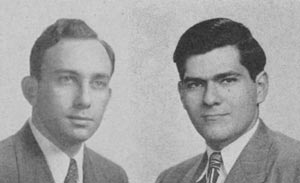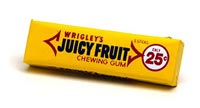
Joseph Woodland and Bernard Silver
However, the first commercial use of barcode happened later, only in 1966, after being discussed in a meeting by the National Association of Food Chains. Things still progressed quite slowly, though: years of tests and code refinement passed. In 1973 George J. Laurer invented the UPC — Uniform Product Code — which was destined to become one of the most popular barcode, and in particular the standard product barcode in the United States.

Wrigley’s Juicy Fruit chewing gum
So these are the main points of the barcode history. Nowadays, barcodes are of course the most popular technology of product management and checkout processing, but not just that: the introduction and diffusion of QR codes — which are none but matrix barcodes — has for instance proved the longevity and flexibility of this idea.
Of course, today it’s even simplier to design and print barcodes, even from your very home. You just need to use a label creation software like LabelJoy or LabelRight: both are very intuitive, and make the whole process as easy as pie.
